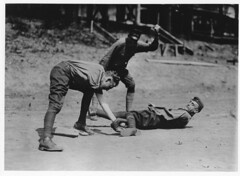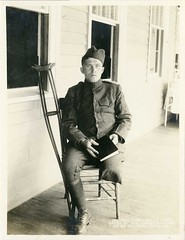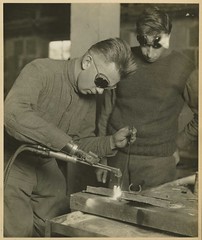The cover of his new book is a photograph from us -The Maryland Colloquium on the History of Technology, Science, and Environment (MCHOTSE) is pleased to announce its session for March 5, 2009.
MALARIA & WAR: THE U.S. ANTIMALARIAL PROGRAM IN WORLD WAR II
Leo B. Slater, author of "War and Disease: Biomedical Research on Malaria in the Twentieth Century" (Rutgers University Press, 2009).
The Colloquium meets in room TLF (Taliaferro Hall) 2110 at the University of Maryland, College Park. Social 'hour' with refreshments, 4:00-4:30 pm; presentation and discussion, 4:30-6:00 pm.
[no precirculated paper available for this talk]
ABSTRACT
Malaria-a major cause of mortality and morbidity during the twentieth century-remains one of the leading killers in the world today. Malaria's enormous impact on human populations throughout the modern era has often put this disease at the center of colonial expansion, warfare, economic transformation, and North/South global tensions. In the late 1930s, the growing global conflict brought new attention to malaria.
The US antimalarial program during World War II was a Manhattan Project for biomedicine. From 1939 to 1946, it screened some 14,000 compounds for antimalarial activity, clinically ratified atabrine as the drug of choice in 1943, and, by war's end, identified chloroquine as a superior compound. Initiated by the National Research Council, the program drew on a set of intellectual and organizational resources and models extending back to the German pharmaceutical and dye industries and to such domestic institutions as the Rockefeller Institutes and Foundation. Prospectively, the wartimeantimalarial program deserves historical attention as both an undertaking in its own right-one that helped to safeguard millions of GIs-and as a model for future large-scale biomedical research projects. Its later use as a model was perhaps most clearly seen at the National Institutes of Health.
The innovations of the US wartime antimalarial program chiefly lay in three areas: administration, scale, and communication. The program produced not just research findings, novel compounds, and clinical protocols, it also developed new organizational structures for scientific cooperation and distributed research networks. I argue that wartime work was essential to the development of NIH, if only because the confused and faltering structures of the early war years, 1939-1943, suggest that an organizational infrastructure for large scale, multi-center cooperative research did not exist prior to World War II.
****
Taliaferro Hall is up the hill past the Memorial Chapel, off of U.S. Rte. 1 (Baltimore Ave.) in College Park. The University's web site will provide a map as well as advice on parking [see: http://www.parking.umd.edu/themap; look for building 043]. Many restricted lots at the university are available to the public after 4:00 pm, but attendees are advised to read all parking lot signs carefully. Lots C and L are the closest unrestricted lots (after 4 pm) to Taliaferro Hall.





